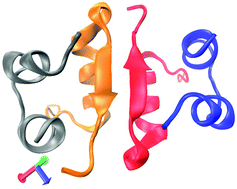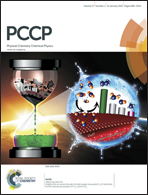Intermediates caught in the act: tracing insulin amyloid fibril formation in time by combined optical spectroscopy, light scattering, mass spectrometry and microscopy
Abstract
Interest in the topic of amyloid formation by peptides and proteins has increased dramatically in recent years, transforming it from a puzzling phenomenon associated with a small number of diseases into a major subject of study in disciplines ranging from material science to biology and medicine. The tendency of numerous (also non-pathogenic) proteins such as insulin to self-assemble into amyloid-like fibrils is well known. While fibrils are usually easily detected, the observation of transient intermediates is a big challenge in general. They are the key and the ‘holy grail’ for a molecular understanding of mechanisms in this context. Here we show that intermediates, i.e. oligomers, can be detected and their hydrodynamic radius RH as well as their overall conformation and structure can be monitored and the aggregation dynamics as well as structure formation can be detected in time with a suitable combination of experimental techniques. We have observed transient intermediates that resemble large oligomers held together in solution by non-covalent forces. The oligomers appear to convert into building blocks for mature fibrils with largely beta-sheet conformation resembling key players in a mechanism, which is termed ‘nucleated conformation conversion’ in the literature. Structural transformations of oligomers in time towards dominant beta-sheet conformations have been observed for the first time. The structures can even be observed in liquid phase AFM experiments. With this approach we have successfully shed new light into the aggregation and fibrilization process of insulin being possibly a model system for other amyloid systems.


 Please wait while we load your content...
Please wait while we load your content...